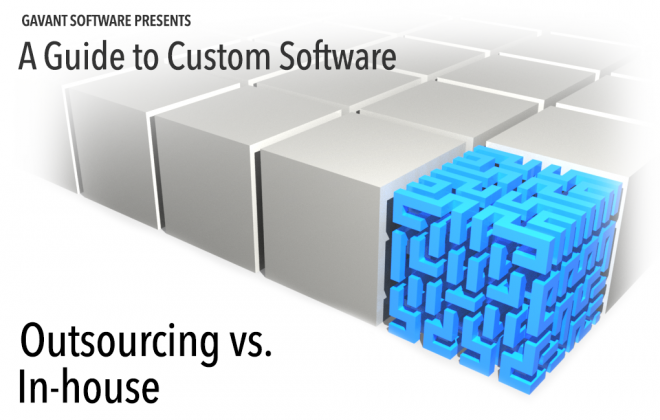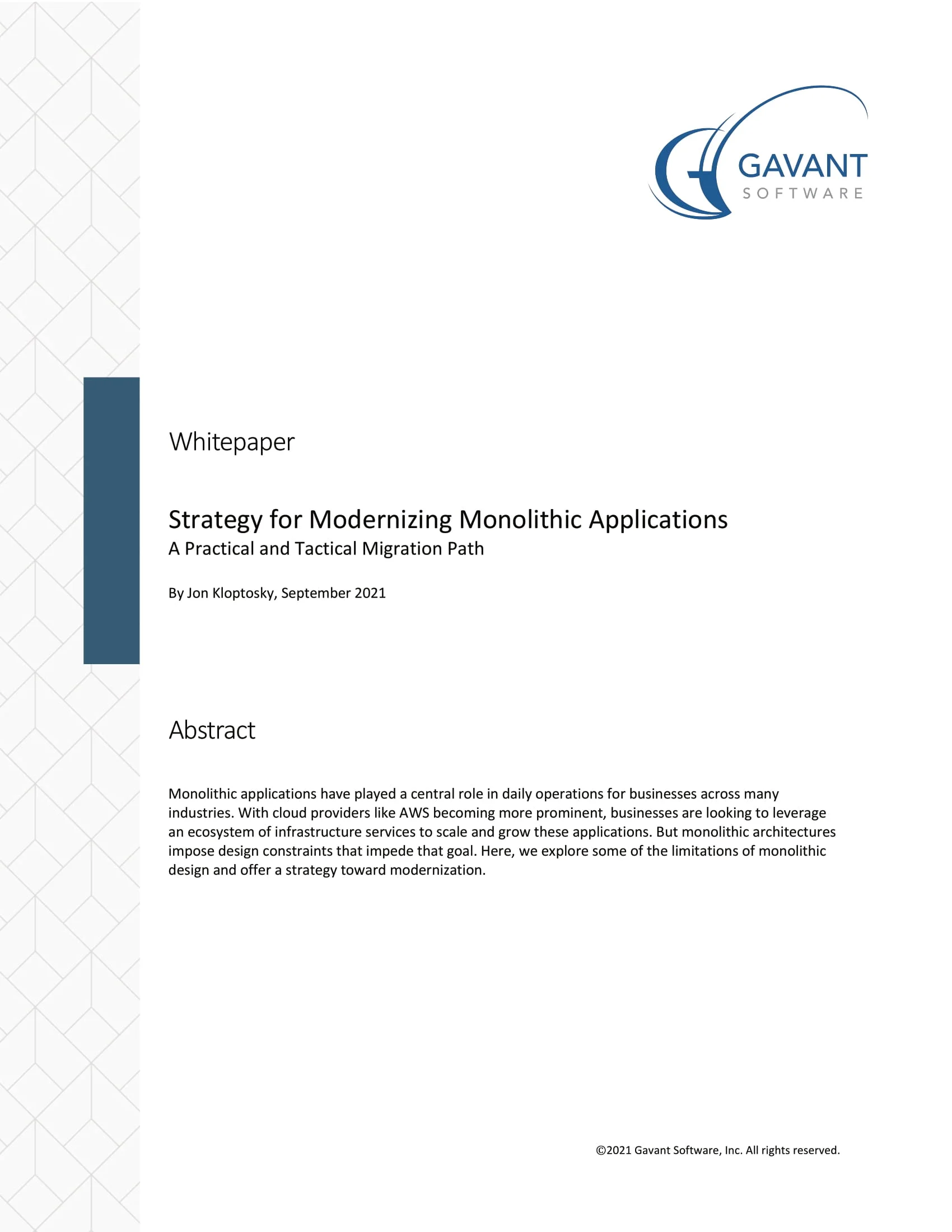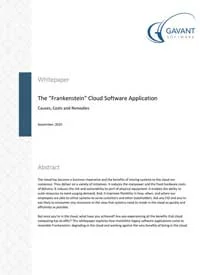A Guide to Custom Software, Part 4: Six Reasons Custom Software Projects Fail
 This series, A Guide to Custom Software, was developed to provide insight to give you an edge when making decisions about software. While our previous entries aided in the lead-up to the development of your solution, in this fourth entry, Six Reasons Custom Software Projects Fail, we discuss some common risks your custom software may face throughout the project’s development life cycle.
This series, A Guide to Custom Software, was developed to provide insight to give you an edge when making decisions about software. While our previous entries aided in the lead-up to the development of your solution, in this fourth entry, Six Reasons Custom Software Projects Fail, we discuss some common risks your custom software may face throughout the project’s development life cycle.
In our previous piece, we discussed some merits and drawbacks of both outsourcing your custom software development and keeping the work internal with an in-house team. Neither development path, however, affords immunity to a failing project. There are myriad reasons for why your custom solution can fail; in this article we’ll identify six common factors that can ultimately make your custom software projects fail.
Lack of a purpose. While software is undoubtedly essential for certain business functions to run smoothly, a custom project can be troublesome if its purpose is not clearly defined. Frequently, companies get lost in the limitless buffet of nice-to-haves that are easily added to their custom solution. Without a precise value proposition, the solution’s development can spiral out of control. Both before and during the solution’s development, ask yourself questions like:
- What problem does this custom software help solve?
- At what point will the problem be considered solved?
- What value does the solution provide – efficiency, productivity, etc?
- How will this software provide benefits both today and in the future?
Providing honest and concrete answers to these and similar questions will help ensure the custom solution in which you are about to invest considerable resources truly does have a focused purpose. By continually revisiting these questions throughout development, you can help keep your project on track and positioned for success.
 Too ambitious at the outset. When an idea for a new product comes together, it’s common to try to expand upon it in an effort to build a grand solution that can solve many problems and satisfy multiple needs. However, such methodology can lead your new custom software solution down a rocky path. Bloated feature sets and capability requirements for the new software contribute to extended timelines and budgets, often without even knowing if these add-ons truly will be desired by the end user. It’s wise to begin development on your new software with an MVP – minimum viable product – in order to keep initial costs low while identifying the best direction for your software. Utilizing an MVP as a foundation of your new software strategy allows you to be more adaptable while safeguarding against the risks of being overly ambitious in the early stages of development.
Too ambitious at the outset. When an idea for a new product comes together, it’s common to try to expand upon it in an effort to build a grand solution that can solve many problems and satisfy multiple needs. However, such methodology can lead your new custom software solution down a rocky path. Bloated feature sets and capability requirements for the new software contribute to extended timelines and budgets, often without even knowing if these add-ons truly will be desired by the end user. It’s wise to begin development on your new software with an MVP – minimum viable product – in order to keep initial costs low while identifying the best direction for your software. Utilizing an MVP as a foundation of your new software strategy allows you to be more adaptable while safeguarding against the risks of being overly ambitious in the early stages of development.
Poor communication. Frequent, clear communication is critical when developing a custom software solution, as even a minor breakdown can put the project at a severe risk of failure. Throughout the software’s development process, care should be taken to ensure you completely identify the requirements and that they are fully understood by the development team. While it’s not unusual for new features and functionality to be added in later stages of development, it is necessary to share these new specifications thoroughly and expediently with the developers so that the production timeline and forecast can be altered as needed. Similarly, the developers should make themselves available throughout the project’s life cycle in order to answer any questions and provide you with updates and testable software. Strong two-way communication between you and the custom software developer will help ensure your project is on the right track.
 Inaccurate estimates. A failure to properly determine your company’s budget for a custom software solution or a severe misidentification of what the software needs to do can quickly sink your project. To safeguard against this, make communication and transparency a priority. Be sure all stakeholders – whether they are customers or employees – are accounted for in factoring in system requirements to help lessen the likelihood of significant surprises or roadblocks occurring and impacting project development. Frequent and thorough communication between your organization and your developer leads to a more complete understanding of budget constraints, requirements, and timelines. From the developer’s perspective, this more in-depth understanding enables them to provide a more accurate estimate for the project and give a clearer view of the overall roadmap to the solution’s completion.
Inaccurate estimates. A failure to properly determine your company’s budget for a custom software solution or a severe misidentification of what the software needs to do can quickly sink your project. To safeguard against this, make communication and transparency a priority. Be sure all stakeholders – whether they are customers or employees – are accounted for in factoring in system requirements to help lessen the likelihood of significant surprises or roadblocks occurring and impacting project development. Frequent and thorough communication between your organization and your developer leads to a more complete understanding of budget constraints, requirements, and timelines. From the developer’s perspective, this more in-depth understanding enables them to provide a more accurate estimate for the project and give a clearer view of the overall roadmap to the solution’s completion.
Poor development practices. Just as there are varied methods to actually having your custom software solution developed, the developers of the software can differ widely in how they perform. Not every development firm follows the best practices, and in many cases this can severely hinder the success of your new custom solution. If the company doesn’t have an in-depth engagement with you in an effort to understand your business, is often unavailable for support and assistance, or doesn’t follow and utilize industry standards, your software is likely to suffer. Be sure to thoroughly research the developer prior to selecting them as your project’s development team. Some questions to help determine the quality of a developer are:
- Does the development team use an agile approach to software development?
- Do the developers test thoroughly throughout the process?
- Does the firm put forth an honest effort to better understand the business and industry?
- Is the client kept in the loop throughout the stages of development?
Questions like those above help give some insight into how a company may perform while building your custom solution. It’s important to identify firms that employ sound practices – whether in physically coding the software or in simple day-to-day interactions with their clients.
Failure to implement. Imagine paying for something you’re never going to use. Unfortunately this scenario plays out more often than it should with new software projects. New apps are built and then abandoned without promotion or deployment. Processes are looked at but never changed, leaving employees struggling to boost productivity. A software’s purpose is not fulfilled simply because the solution was built. Considerable effort needs to be taken to ensure employees understand and adopt the new software. If employees are not engaged or their input is not considered they lose interest and are reluctant to support change. Customers need to be aware of and actually have a reason to use the new solution; make them know their life is better with it than without. The implementation of your custom software solution is key to its success; without great implementation, you’ve failed to close the loop and the software project is a wasted endeavor.
Awareness of some of the potential factors that can undermine your custom software project is critical in protecting against the failure of your software. While this article is by no means all-encompassing, the six causes highlighted here provide some insight into what risks you may face during the software’s development life cycle. Identifying these risks and mitigating or eliminating them entirely can boost the likelihood that your new custom software solution is a successful undertaking rather than one in which all your custom software projects fail.




 Strategy for Modernizing Monolithic Applications
Strategy for Modernizing Monolithic Applications
 The "Frankenstein" Cloud Software Application
The "Frankenstein" Cloud Software Application
 A Guide to Custom Software Development
A Guide to Custom Software Development